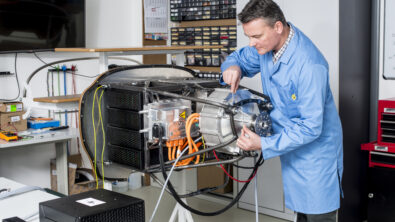Making more global battery capacity

Batteries are going to play an important role as industries around the world seek to electrify as much as possible and shift toward renewable energy sources. That is not to say there are no challenges in doing so sustainably. The resources needed and some of the labor practices around the world make battery a very complex industry to help mitigate ecological harm from traditionally fossil-fuel run industries. Some businesses are looking to battery chemistries that use far fewer of these critical materials, or even none at all. Others are leaning on recycling to solve the material scarcity problems of the industry. And while all of this is happening, governments are enacting new regulations and requirements to apply an external pressure on innovation.
That might be a lot of hard discussions for a company looking to grow, but there is a large upside to these same manufacturers and OEMs trying to make a name in battery electrification. The demand for batteries is only set to grow in the next decade, providing a wider pool of customers. Some of the regulations are more like incentive programs, created to foster sector growth in specific regions. And even large industry operations are beginning to see large scale battery capacity as a means to make their own operations more sustainable by providing a storage pool for renewable energy and even load shifting operations as a cost-saving measure.
Recent changes for the sector?
It is hard to tell as an outsider, but there are interesting little bits of information from helping host the Battery Podcast from Siemens Digital Industries and general news that I’ve found quit interesting. First and foremost is the shift stemming from reshoring efforts in the United States. The Inflation Reduction Act set aside incentives for consumers, OEMs, and manufacturers for electric vehicles meeting certain labor thresholds on origin, in an effort to create capacity at home. From this a couple things have happened.
Maybe most important for a company like Siemens is the rush to build new capacity quickly. That comes with a need for parallelizing as much development, planning, and training as possible with digital tools to get to first battery. It means optimizing the communication between design and manufacturing to reduce the waste from cell manufacture, which can be very high for new businesses, making the process more profitable and sustainable. But is also means accelerating knowledge capture and experience gathering because building new capacity outside of the traditional centers of competency means the workforce needs more training to match the quality and capacity of an incumbent.
Perhaps parallel to the acceleration of local manufacturing, or possibly stemming from, is a perception that there is growing competition in the space. While many American automakers sell EVs, the market has been dominated by a small handful of manufacturers. And these same manufacturers may be seeing the squeeze on market share. It was reported recently that Tesla stopped development on its charging network, even with the possible incentives from the US Government to increase charging capacity around the country. It is hard to know the reasoning, but with more companies adopting the once proprietary charging port as the North American Charging Standard (NACS) it could be a sound business decision to let more companies build out the infrastructure. Even outside of the intention of the decision, moving away from a smaller set of charging manufacturers could bring some great innovation to the space through competition.
Leaving a US-centric discussion, there is an interesting possibility in the making out of China. CATL is a darling in the battery industry, setting new bars for what a battery can be in our electrified world. But directly dealing with the many local regulations around the world is not a task I would want to deal with, even with the capital to do so effectively. It seems CATL may be of a similar mind if the rumors of technology licensing hold any weight. Instead of having to modify production for each market and their regulations on battery manufacture, the company could gain an alternate revenue source by licensing their tech. to new manufacturers around the world.
The future of battery
This is only a snapshot of what is happening in the industry and what is important to those working though the challenges of accelerated growth. For more information on the topic you will want to check out our website Siemens.com/battery. And for continuing conversations from industry experts, The Battery Podcast is a great resource, make sure to subscribe to get updated on new episodes.
Siemens Digital Industries Software helps organizations of all sizes digitally transform using software, hardware and services from the Siemens Xcelerator business platform. Siemens’ software and the comprehensive digital twin enable companies to optimize their design, engineering and manufacturing processes to turn today’s ideas into the sustainable products of the future. From chips to entire systems, from product to process, across all industries. Siemens Digital Industries Software – Accelerating transformation.
For more information on Siemens Digital Industries Software products and services, follow us on LinkedIn, Twitter, Facebook and Instagram.


